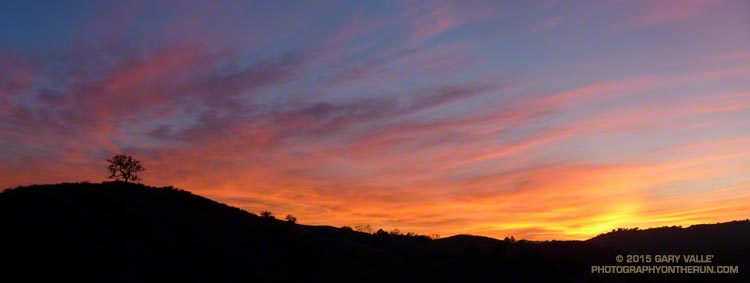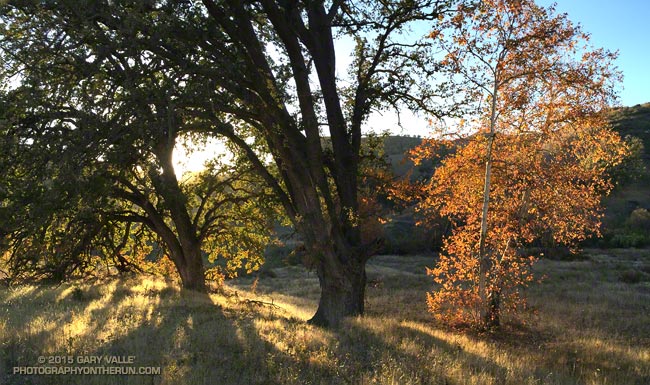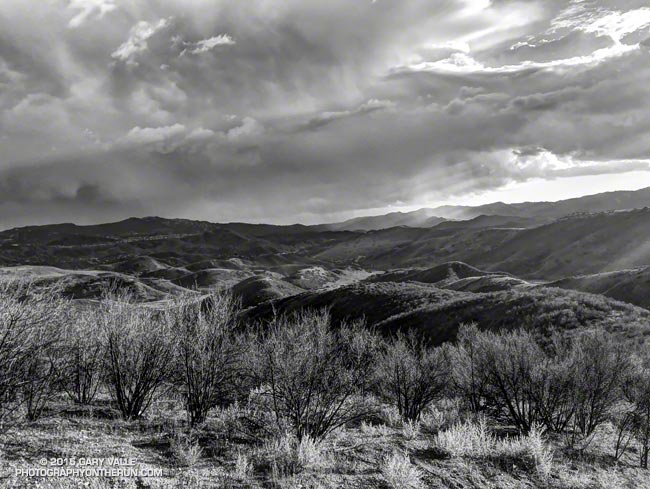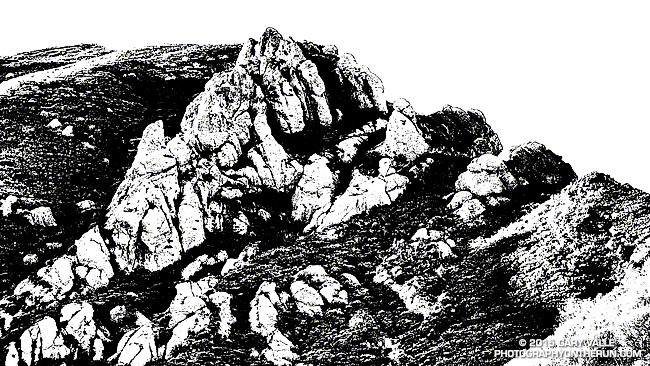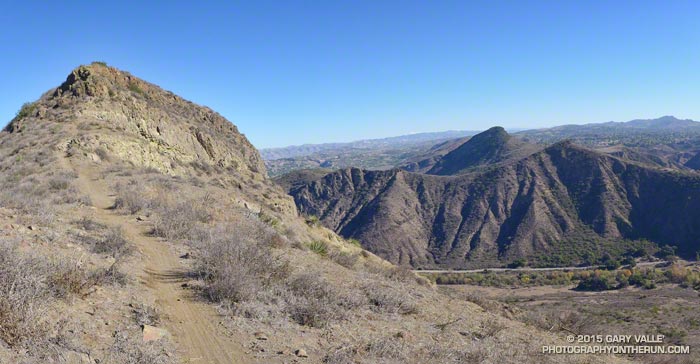
This morning’s run had started on the southern boundary of the Arroyo Conejo Open Space near Amgen in Thousand Oaks. It was 39°F at the beginning of the run and the chill of dawn and brisk north wind made it feel even colder. The plan was to run north on the Arroyo Conejo Trail and connect to the trails in Wildwood Park.
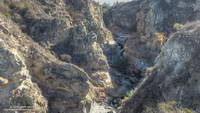
Running on automatic, and hoping to warm up quickly, I followed the Arroyo Conejo Trail north along the shoulder of the canyon. Known as “La Barranca” the three mile long canyon extends from the 101 Freeway to Hill Canyon near Santa Rosa Road. Rounding a corner and working up and over a little hill I looked to my right and was astonished to see that in this section of the canyon a deep, vertical-walled gorge had been cut into the residential landscape.

The wildness of the gorge set the tone for the remainder of the run. Arroyo Conejo, Wildwood Park and the Western Plateau have a scenic, desert southwest character all their own and an extensive trail system. If a bluff, peak or other feature looked interesting, there was generally a way to get to it. I ran along Stagecoach Bluff, then to Lizard Head, and then over to the Canyon Overlook Trail and down to the Conejo Canyons Bridge at the Hill Canyon trailhead.
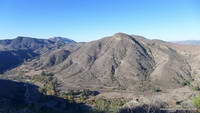
After running up Hill Canyon, I was once again headed uphill, this time on the Western Plateau Trail. I’d caught a glimpse of some mountain bikers high on the bluff above and couldn’t resist continuing. I had more than 10 miles in and was planning to go back through Wildwood Park. Each mile added now would add two miles to my growing round trip total.

That’s the difficult thing about doing an exploratory run — deciding where to turn around. You HAVE to see what’s around each corner and what the view is like from the top of every hill. You can’t turn around just anywhere, and I was looking for the right place.
Turning onto the Outlaw/Gnome Trail, in a few minutes I reached the top of the rock outcrop where I’d seen the mountain bikers. But it wasn’t the top of the climb, and it definitely wasn’t the right spot to turn around. A bit higher I could see a sign silhouetted on the skyline and was curious to see what it said.
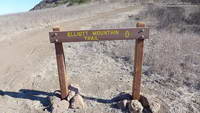
The sign read “Elliot Mountain Trail.” How could I turn around now? Continuing east, a newly cut trail with a bench en route led to the top of the peak. Recently named in honor of Burt Elliot, “a tireless volunteer, open space advocate and champion of trails,” the peak was the perfect place to spend a few minutes enjoying the great view and then start my circuitous trip back to the car.
For trail maps and more information see the Conejo Open Space Foundation web site.
The title photograph is Elliot Mountain with Lizard Head, Mountclef Ridge and Wildwood mesa in the distance.

